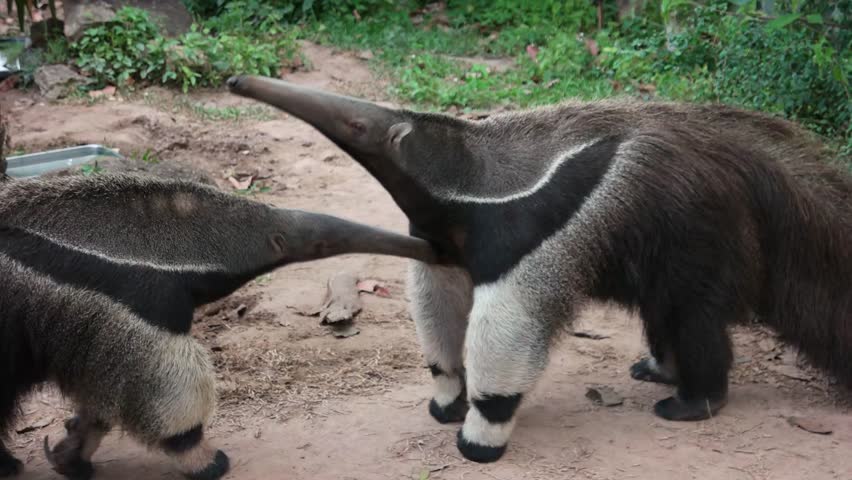ANIMAL: Giant Anteater Myrmecophaga tridactyla Type of Animal: Anteater Habitat: Grasslands, savanna, swamps, tropical forest, woodlands, dry forest Location(s): Many parts of C. & S. America, except mountainous areas & much of S. South America Appearance: Furry w/ blackish stripe & many gray-brown areas plus bushy tail & long snout. Also long, can-opener claws. Food/Diet: Ants, termites, beetles, insect larvae, worms, grubs, fruit Status in Wild: Threatened Conservation: Breeding in zoos & wildlife parks Lifestyle: Solitary Additional Info: Called: Male Female Young-Pup Group-Solitary Weight: Male-121 lbs Female-110 lbs Young-3-9 lbs Gestation: 6.5 months Height: 2 ft Body Length: 3.3-3.9 ft Life Span: 15-25 years Tail Length: 2.1-3 ft Main predators are jaguars & pumas. Ocelots prey on young. Closest relatives are sloths & armadillos. Young anteaters ride on mom’s back. Poor eyesight & hearing but great sense of smell. In fact, sense of smell 40 times as powerful as human’s. Even though somewhat territorial, fights uncommon. They lack teeth. Almost exclusively terrestrial. Only makes bellowing noise when threatened. If not threatened, generally silent. Tongues often somewhat spiny. Declining due to hunting for meat/skin, collisions with cars, habitat loss, deforestation, human encroachment, wildfires, & killing as pests. Females have 1 baby every 2 years, which is when previous youngster leaves mom-though sometimes youngsters will leave as early as 1.4-1.5 years. When taking ants from anthills and termites from termite mounds, anteaters raise up on hind legs. They are surprisingly good swimmers. Fun Fact(s): They can flick tongue in & out up to 150 times per minute. Can eat as many as 50,000 insects in a day with a 2 ft long tongue. Spanish name for anteater is “oso hormiguero” meaning “ant bear”. Sleep as much as 15 hours per day. Generally non-aggressive, anteaters use sharp digging claws to attack if provoked & females w/ young can be dangerous. These claws can cause serious wounds to humans, jaguars, & pumas.
